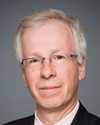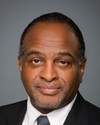I'm on again. My apologies.
I'll talk about models and programs, if you'll allow me.
Since you spoke to me in French, I will answer you in French.
For the first six years in grade school, we refer to a teaching model, because they are departmental programs. They can therefore be found at the secondary school level. In grade school, the program offered in anglophone schools is called “second language core French”. Most of the teaching in the first six years of grade school — or seven, if one includes kindergarten — is in English. There are a few subjects, including French, that are taught within an English language context.
However, as was pointed out earlier, one can talk about partial or total immersion in the case of many subjects. Just like my francophone colleagues from francophone school boards, who can only teach English in English, we can only teach
English language arts
in English as well. It's the same for other subjects. It's a privilege, and I dare to hope that we will preserve this delightful gift for the future. It allows young people to expand their vocabulary, to make transfers, and to adapt both syntactical and phonological structures. We're talking about phonological awareness from a young age. It's very important. When a young person learns a second language at a young age, from the end of the second cycle — therefore, at the end of grade four — gains can be observed.
Children will often use both English and French words. That's when people may say that they are mixing things up. They separate them, but afterwards, both official languages are used, depending on vocabulary and the subject matter being taught.
In grade school, we really talk about a model. It's possible, particularly with a classroom teacher, and, in many cases, a few specialist support teachers, to access resources and provide accommodations to ensure that a student, whether a newcomer or someone whose second language is not currently French, does acquire these skills, be it through oral communication, reading or writing.




